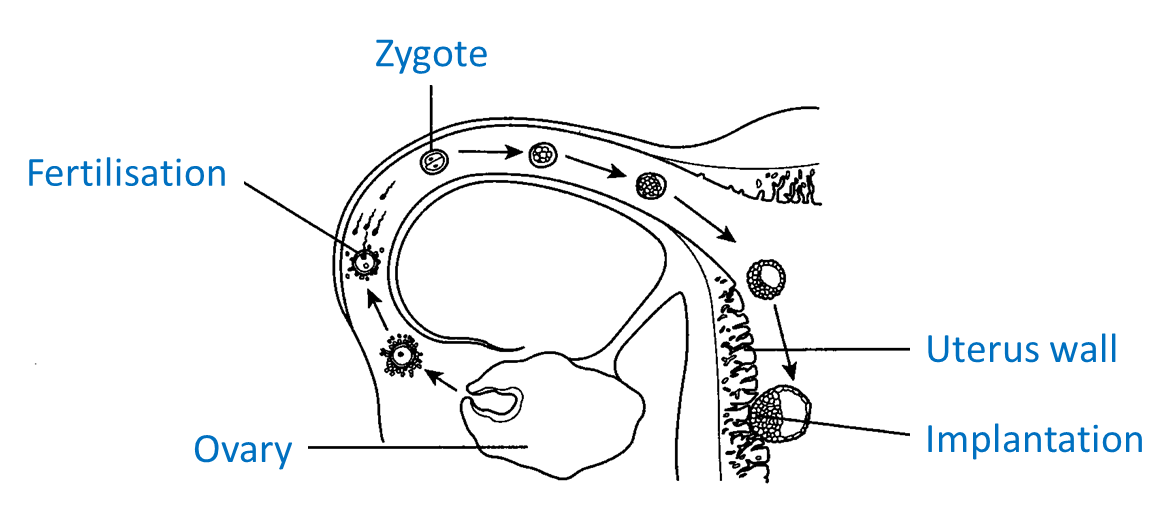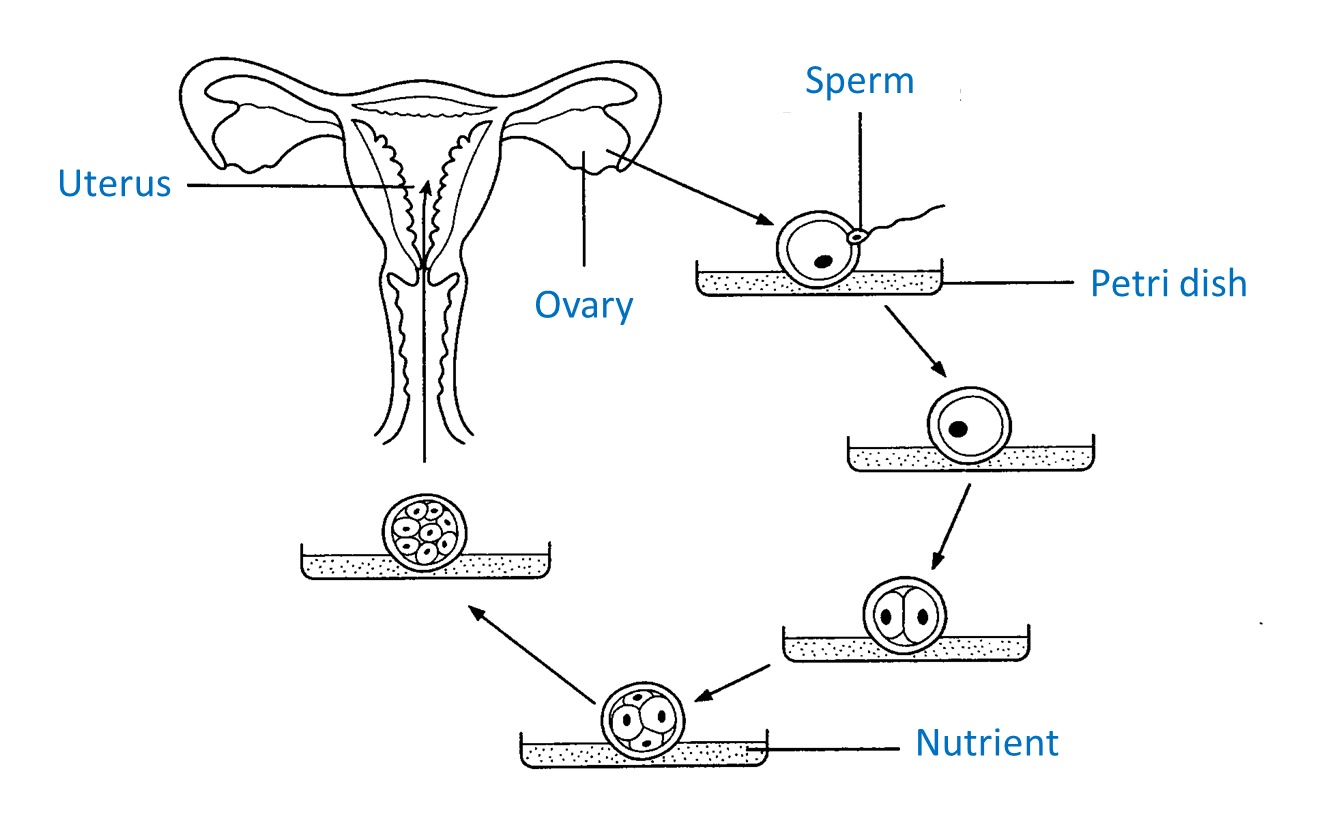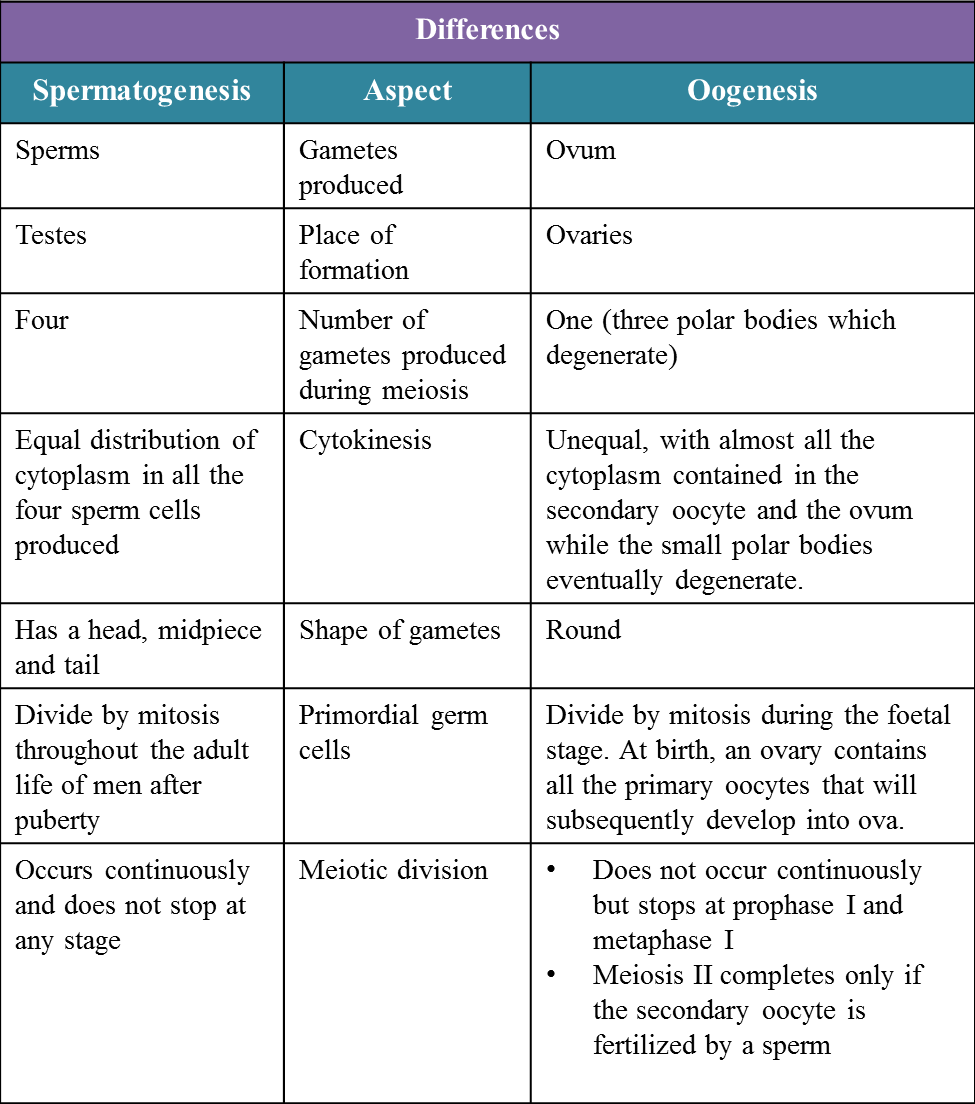Question 1:
(a) Diagram 1 shows part of a female reproductive system.
The development of zygote occurs in this system.
(b) Diagram 2 shows a method to overcome infertility in a married woman with a blockage in both of her Fallopian tubes.
(c) Diagram 3 shows the schematic diagram of spermatogenesis and oogenesis in human.
Solution:
(a) Diagram 1 shows part of a female reproductive system.
The development of zygote occurs in this system.
 Diagram 1
Diagram 1
Based on the Diagram 1, describe the development of the zygote after fertilization until implantation. [4 marks]
(b) Diagram 2 shows a method to overcome infertility in a married woman with a blockage in both of her Fallopian tubes.
 Diagram 2
Diagram 2
Explain how this method helps this woman to have a baby. [4 marks]
(c) Diagram 3 shows the schematic diagram of spermatogenesis and oogenesis in human.

Explain how this method helps this woman to have a baby. [10 marks]
Solution:
(a)
After fertilization:
- The zygote begins to divide repeatedly by mitosis and travels along the Fallopian tube towards the uterus.
- It forms a two-celled embryo.
- Further division results in the formation of a ball of cells or morula.
- Next, the morula becomes a blastocyst, a hollow ball of cells.
- Implantation of the blastocyst then occurs in the endometrium.
(b)
It is the in vitro fertilization (IVF) method.
- A fine laparoscopy is used to remove a mature ovum from the ovary.
- The ovum is then placed in a Petri dish with a culture solution to mature.
- Then, concentrated sperms from the father are added.
- A sperm and the ovum fuse to form a zygote which develops into an embryo.
- After 2 – 4 days, when the embryo reaches the eight-cell stage, it is inserted into the uterus through the cervix.
- For implantation in the uterine wall.
- The baby conceived is called a test tube baby.
(c)
Similarities:
- Both processes occur in the reproductive organs.
- Both processes involve the process of meiosis.
- Both processes produce haploid gametes that are involved in fertilization.
